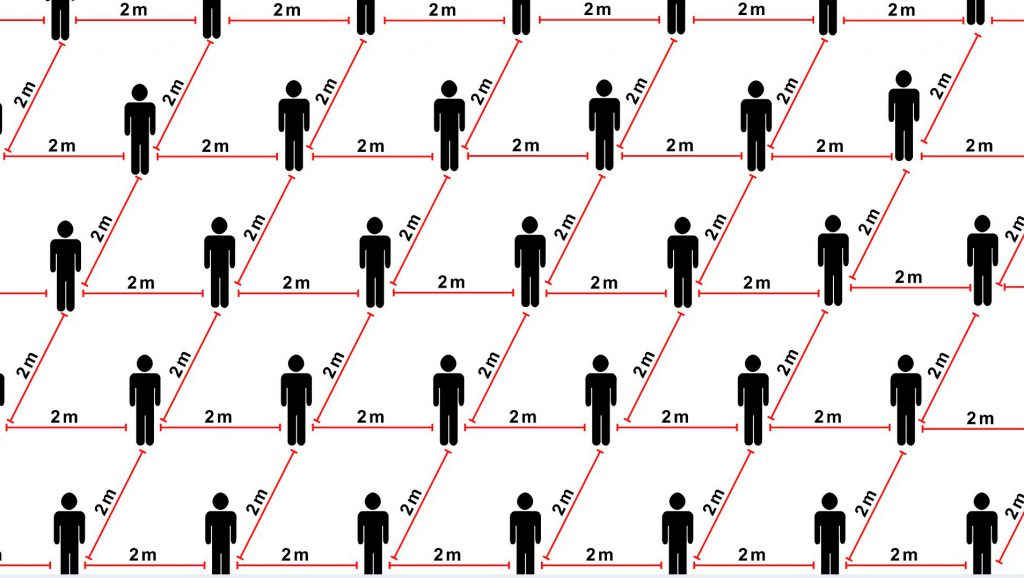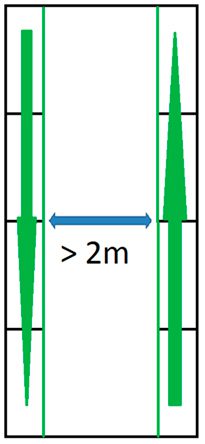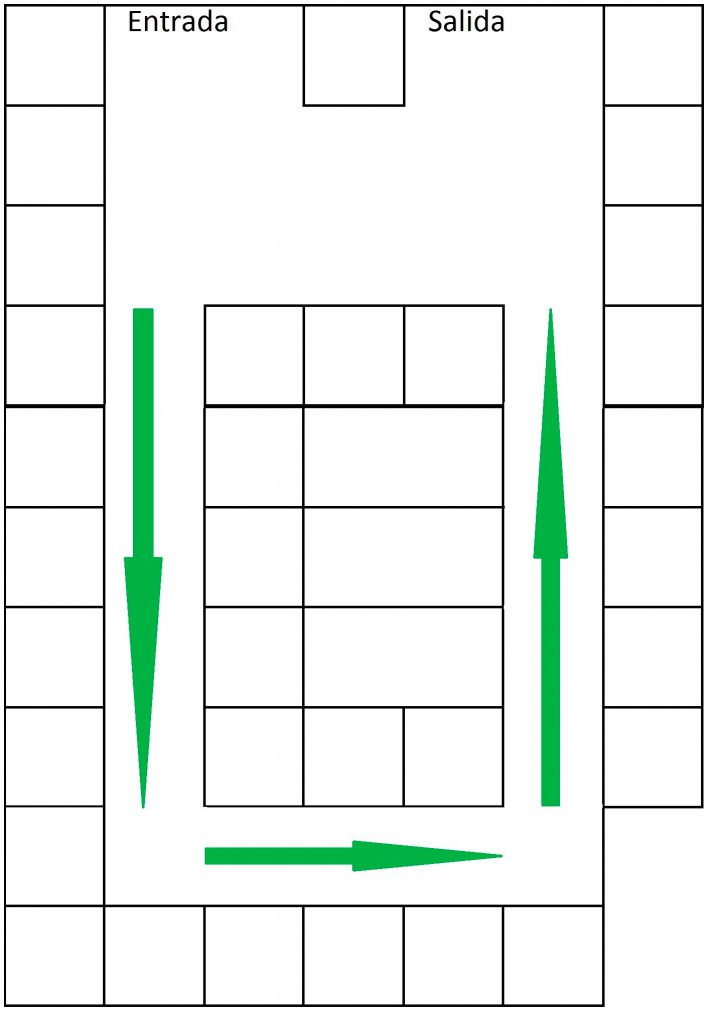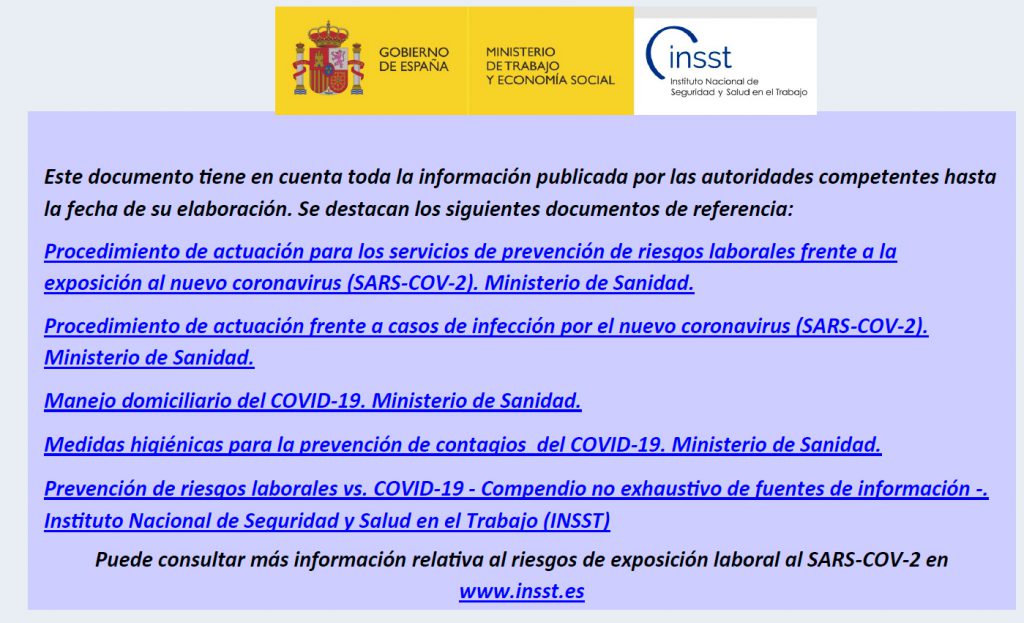
La transmisión del coronavirus SARS-CoV-2 puede producirse bien por entrar en contacto directo con una persona contagiada, bien por entrar en contacto con superficies u objetos contaminadas. Por tanto, se deben adoptar medidas para evitar ambas vías de transmisión.

En este documento, se recogen únicamente algunas de las acciones que podrían llevarse a cabo para evitar la transmisión del virus de persona a persona, orientadas a mantener una distancia de seguridad entre trabajadores o, cuando esto no sea viable, establecer elementos de separación física entre dichos trabajadores.
Con el objeto de evitar contagios entre trabajadores, se seleccionarán aquellas medidas que sean facti-bles, según cada caso concreto, siguiendo el orden de prioridad que se expone a continuación (siempre, tras haber valorado, previamente, la necesidad de que los trabajadores desarrollen su actividad presen-cialmente en el centro de trabajo, la reducción del tiempo de permanencia en el centro de trabajo al estrictamente necesario y la reducción al mínimo del número de personas que concurren en él al mismo tiempo):
1) Medidas que garanticen una separación de 2 m
Para que pueda mantenerse una distancia de 2 metros entre personas, se deberá calcular el aforo má-ximo permitido en cada una de las estancias/salas del centro de trabajo, teniendo en cuenta las dimen-siones de cada una de ellas, la ubicación y dimensión del mobiliario, equipos de trabajo, etc. y la distri-bución y dimensiones de los puestos de trabajo. Esto deberá aplicarse, también, a las áreas de uso co-mún (entrada/salida, vestuarios, aseos, comedores, pasillos, etc.) y a aquellas circunstancias en que sea necesario que personas ajenas a la organización accedan a las instalaciones de la misma (por ejemplo: para el suministro de materias primas, reparación de averías, etc.).

De igual manera, cuando se trate de locales con afluencia de público (por ejemplo: supermercados, far-macias, estancos, etc.) se adoptarán medidas organizativas para que mantengan la distancia social re-comendada con los trabajadores y, a ser posible, entre los propios clientes. En este sentido, cabe remar-car que limitar el aforo es una medida imprescindible pero deben adoptarse otras adicionales para con-trolar que, una vez en el establecimiento, los clientes no se concentren en una determinada área del mismo sin mantener la citada distancia social.

A continuación, se recogen algunas medidas para garantizar la separación de 2 m entre trabajadores en función de las zonas en las que se encuentren:
ZONAS DE TRABAJO :
Se entiende por zonas de trabajo aquellas áreas del centro de trabajo en las que el trabajador permanece mientras desarrolla su actividad laboral. Cabría diferenciar las siguientes situaciones en función de las características del puesto de trabajo y las medidas organizativas que podrían adoptarse en cada caso:
Puestos de trabajo estáticos:
Cuando el tipo de actividad que realice el trabajador lo permita (por ejemplo: oficinas, call center, línea de producción, etc.), podrá acotarse y señalizarse (con pintura, cintas o pegatinas, elementos de baliza-miento, mobiliario, etc.) el área o espacio concreto que este ocupa durante la ejecución de sus tareas. A partir de los límites del área que se haya acotado para cada puesto de trabajo, se establecerá una distancia de 2 metros en todos los sentidos de manera que se mantenga esta distancia con otros trabaja-dores y/o vías de circulación desde cualquiera de los puntos en los que pueda situarse el trabajador du-rante la ejecución de sus tareas.
A tal efecto, podría ser necesario realizar determinados ajustes como por ejemplo:
– Reubicación de los puestos de trabajo y/o mobiliario.
– Disminución del número de personas presentes por turno a las estrictamente necesarias.
– Mayor número de turnos pero con menor número de trabajadores.
– Reasignación de tareas.
– Modificación de la velocidad de la producción.
Puestos de trabajo dinámicos:
Cuando la actividad que realice el trabajador no permita acotar y señalizar un área o espacio concreto (por ejemplo: personal de limpieza, mantenimiento, almacén, etc.), porque la ejecución de sus tareas requiere continuos desplazamientos dentro de una misma zona o a distintas zonas del centro de traba-jo, se valorará la adopción de medidas organizativas como las siguientes:
– Minimizar el número de trabajadores que accedan a una misma zona al mismo tiempo.
– Organizar y planificar, con suficiente antelación, las actividades que deban realizarse en di-chas zonas espaciándolas en el tiempo y en el espacio, en la medida de lo posible, para minimizar la concurrencia.
– Asignar zonas específicas a cada trabajador, de manera que este sea responsable de llevar a cabo todas las tareas o actividades en la misma.
– Asignar horarios específicos para cada actividad y trabajador.
Además de lo anterior, se establecerán vías de circulación interiores (dentro de la zona de trabajo), definiendo y señalizando los itinerarios a seguir (preferiblemente de sentido único para evitar cruces de personas) con el objeto de mantener la distancia social recomendada tanto entre aquellos que estén transitando por dichas vías como con aquellos que se encuentren situados en sus puestos de trabajo.
ZONAS COMUNES:
Al igual que en las zonas de trabajo, en las zonas de uso común (aseos, vestuarios, pasillos, acceso a las instalaciones, etc.), se deberá limitar el aforo según las dimensiones de cada espacio, la ubicación del mobiliario y la previsible ubicación de los trabajadores en dichos espacios con el fin de que pueda res-petarse la distancia social recomendada. A continuación, se enumeran algunas medidas organizativas que podrían adoptarse para lograr este objetivo:
– Establecer horarios de entrada y salida al centro de trabajo que permitan un acceso escalonado, reduciendo así la posible concurrencia en el propio acceso, zonas de fichaje, pasillos, escaleras, vestuarios etc. Adicionalmente, se podría señalizar en el exterior las ubicaciones adecuadas en las que deberían situarse aquellos que estén esperando para acceder al centro de trabajo para man-tener entre ellos una distancia de seguridad de 2 metros.
– Cuando sea posible, utilizar puertas de entrada y de salida independientes y evitar cruces, en to-do caso.
– Promover un uso escalonado de zonas comunes (comedores, áreas de descanso, vestuarios, etc.) garantizando que pueda mantenerse una distancia de seguridad de 2 metros. En el interior de estas zonas, para facilitar la identificación de la distancia de seguridad, se podrán utilizar señalizaciones.
– Cuando las dimensiones de alguna zona común (Por ejemplo: aseos, ascensores, etc.) sean reducidas, hacer un uso individual de dichas zonas. Para evitar que otro trabajador acceda a estos espacios cuando estén ocupados, podrá utilizarse una señal que le indique que hay una persona en su interior y que debe esperar a 2 metros de la puerta.
– Cuando sea posible, priorizar la utilización de las escaleras en lugar del ascensor.
– En las vías de circulación como pasillos que puedan existir en el centro de trabajo, siempre que el ancho de la misma lo permita, definir sentidos de circulación separados, al menos, por la distan-cia de seguridad de 2 metros y señalizarlos, longitudinal y transversalmente, con pintura, cintas o pegatinas (antideslizantes y resistentes al desgaste y limpieza), elementos de balizamiento, etc.

Si las dimensiones de la vía no permiten adoptar la medida anterior, establecer un sentido único para cada vía de circulación siempre que exista una vía para recorrer el mismo itinerario en sentido contrario.
Cuando ninguna de las medidas anteriores sea posible, se informará a los trabajadores de la importancia de mantener las distancias de seguridad y de evitar cruces cuando utilicen dichas vías. Así, en pasillos o vías estrechas donde no pueda asegurarse la distancia de seguridad de 2 metros ni instalar los elementos de separación física que se recogen en el siguiente apartado, se pueden utilizar indicaciones para señalar qué sentido tiene preferencia, de forma tal que hasta que la persona con preferencia no haya recorrido dicho pasillo o zona, la persona que desea recorrerlo en sentido contrario tendrá que esperar (de forma similar a la norma de tráfico para puentes o zonas de vía estrecha).

En la siguiente figura, se muestra cómo podrían adoptarse las medidas organizativas propuestas en las vías de circulación que puedan existir en un centro de trabajo:

2) Medidas que separen a los trabajadores mediante barreras físicas
Estas medidas se adoptarán cuando las anteriormente recomendadas para garantizar la distancia de 2 m entre trabajadores no sean viables o no resulten eficaces.
Como ejemplos de barreras que podrían ser utilizadas cabe citar mamparas de materiales transparentes (plástico duro rígido, metacrilato, cristal o, en defecto de los anteriores, plástico duro flexible –generalmente suministrado en rollos-) para no obstaculizar la visibilidad de los trabajadores. Los materiales serán resistentes a rotura por impacto y fáciles de limpiar y desinfectar. Las barreras dispondrán, si fuera necesario, de elementos que las hagan fácilmente identificables para evitar riesgo de golpes o choques.
Se recomienda que la altura de las barreras sea de, al menos, 2 m para asegurar una separación efectiva de las personas, tanto si están sentadas como si están de pie.
Esta medida podrá ser adoptada tanto en las zonas de trabajo como en aquellas de uso común. Será igualmente aplicable para separar mediante barreras físicas a los trabajadores del personal ajeno que pueda acceder a las instalaciones (por ejemplo: suministradores, reparación de averías, etc.) o del público general si la actividad del establecimiento es comercial.
De la misma manera, se podrán instalar separaciones físicas en las vías de circulación siempre que el ancho que corresponda a cada sentido lo permita. Se preverán pasos o discontinuidades a distancias determinadas que permitan el cambio de sentido y el acceso a estancias anexas o a otras instalaciones.

Nota: Las líneas verdes representan las mamparas o pantallas de división.
Asimismo, las medidas para evitar el contagio persona-persona que se hayan adoptado deberán ser puestas en conocimiento de los trabajadores y otras personas que accedan al establecimiento. Cuan-do sea posible, esta información se trasladará, además de verbalmente, utilizando señales estandarizadas. No obstante, debe tenerse en cuenta que en la mayor parte de los casos estas señales estandarizadas no existen, por lo que el empresario podrá utilizar pictogramas, carteles, notas informativas o comunicaciones por megafonía, claras y concisas y se asegurará de que la información llega adecuadamente a todas las personas afectadas.
Todas las medidas que se adopten deberán ser aplicadas a todos los trabajadores que desarrollen habitualmente su actividad en el mismo centro de trabajo, independientemente de si son personal propio o perteneciente a empresas subcontratadas.
A la hora de adoptar las medidas recomendadas en este documento para garantizar la separación entre trabajadores se debe tener en cuenta que, en la medida de los posible, las vías de evacuación establecidas en la empresa para casos de emergencias no deben ser modificadas. En el caso de que, en aras de evitar contagios, no exista otra posibilidad que alterar estas vías de evacuación, se determinarán unas nuevas y se comunicarán a los trabajadores lo antes posible. En cualquier caso, las vías de evacuación no pueden verse obstruidas por ninguno de los elementos de separación física citados en este documento.










